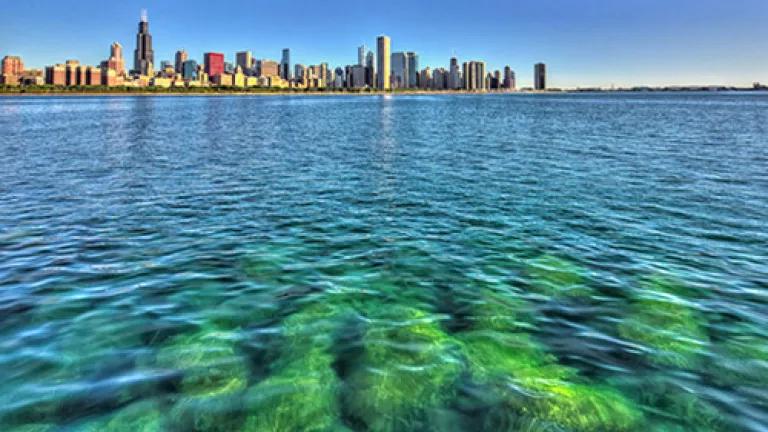
Pollution is refreshingly nondiscriminatory. Often, it is a shared burden that messes with everyone. With the 4th of July coming, issues of water pollution come into focus and make this point clear well, as families head to the beach. Sadly, many of them could get sick as a result.
NRDC’s annual Testing the Water beach safety report sheds light on the issue. The worst beaches are actually in some of Chicagoland’s ritziest suburbs: Winnetka Elder Park Beach (54%), North Point Marina Beach (34%), Winnetka Centennial Dog Beach (29%), Highland Park Moraine Park Dog Beach in Lake County (29%), and Wilmette Gillson Park Dog Beach (29%), and Glencoe Park Beach (28%) had the highest rates of bacteria in the water exceeding federal safety standards.
The fact that no Chicago beaches hit that list is, in part, a testament to good work from the Park District. But we have problem areas in the City, too---on the North and South Sides---with Rainbow Beach, Montrose Beach and South Shore Beach all exceeded water quality standards at least 20% of the time last year.
Great Lakes beaches have bacteria counts exceeding public health standards far more often than the coasts. The fact that our beaches have long suffered from pollution – including bacteria-laden human and animal waste – isn’t new. The sources of that pollution are not new either. But they are, in many ways, getting worse. Our infrastructure is outdated and crumbling. Throughout the region, combined sewers dump sewage and tainted stormwater directly into the Lakes, which stand as 1/5 of the world’s fresh water. And things are getting worse as climate change is already making our storms more violent which leads to more incidences of overwhelmed sewers. Invasive species further complicate the mix by fundamentally changing the Great Lakes ecosystem to allow dangerous pathogens to thrive.
But, hey, I am not a doom and gloom guy. We can turn the tide against persistent water pollution. Today more than ever, we know that much of this pollution pattern is preventable. We can start by keeping pollution out of the Lakes to begin with by using the smarter green infrastructure tools that the City of Chicago pioneered. Things like porous pavement, green roofs, open space, roadside plantings and rain barrels and gardens that absorb, hold and filter rainwater to relieve some of the burden on overloaded traditional water infrastructure. They also make our neighborhoods more livable and can be quickly and cheaply put into place.
This is an area that Chicago was once a leader, but we have fallen behind. A recent agreement between the Metropolitan Water Reclamation District and the EPA offers a real opportunity for the region to catch up if the parties get serious about these less-expensive but highly efficient technologies being embraced by other cities like Cleveland and Philadelphia.
There is similar good news on the invasive species front as steps have been taken to end the chief path of introduction of aquatic aliens in the ballast water tanks of freighters moving between the Lakes. The standards need serious strengthening and we need to address the movement of invasives through the Chicago Waterways, but there is actual movement and improvement in this area. While real climate action seems further off, smart energy efficiency and clean energy policies are making sure we don’t fall even further behind in this area.
It is holiday time. And it is supposed to be 100 degrees today, so let’s keep focused on the issue at hand: beaches. By taking steps to stop the biggest sources of pollution in the waves, we can help keep trips to the beach carefree, and support our lucrative Great Lakes tourism industries.
We’ve invested immense resources to promote the Lakes as beautiful tourist destinations and something that makes life in our cities better. But we haven’t been as serious about investments in the less sexy infrastructure needed to keep the Lakes clean and safe. If we don’t get serious about sewage and intense about invasive species, Great Lakes beaches will become too dirty to swim. Let’s get serious, so that we can have some fun…at the beach. Check yours with the widget below:
